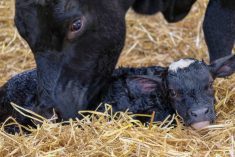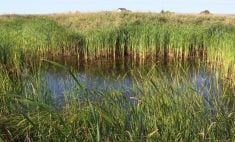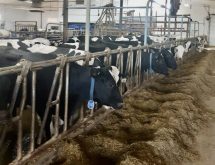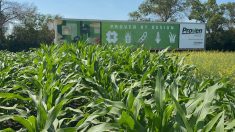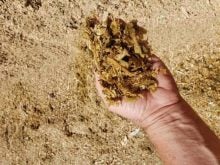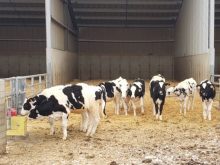This autumn, I have seen a variety of corn fields being chopped into silage for dairy cattle. While some of this corn was dried enough to make some good quality corn silage, I was surprised when I saw some producers literarily harvested green chop. After all, they were faced with another rain shower, which forced them to make wet corn silage. However, they should know the problems of wet corn silage and be prepared to deal with it, when the bunk or silo is opened.
As a dairy nutritionist, I consider any ensiled corn silage to be too wet when its dry matter content falls below 30 per cent, which makes ensiling the crop for good silage difficult in the first place. The best corn silage fermentation occurs when whole plant moisture is between 65 and 70 per cent. This is the standard recommendation for making corn silage in horizontal bags and bunker silos, with a slight drier allowance in tall tower silos.
Read Also

Cancer agency reclassifies another herbicide ‘probably carcinogenic’
The WHO’s cancer research agency has now put atrazine, a herbicide well known to corn growers, in the same potential-hazard category where the agency put glyphosate.
Harvesting corn silage at moistures above this threshold of 70 per cent yields not only lower dry matter content, but may result in seepage of essential nutrients such as soluble proteins and energy-enriched starch and sugars. Rather than promote anaerobic lactobacillus fermentation, which produces high levels of lactic acid to lower the pH in order preserve corn silage, clostridia fermentation is allowed.
Wrong type of fermentation
Clostridia bacteria fermenters convert forage starches, sugars and organic acids into butyric acid, as well as dietary protein into ammonia. This type of fermentation is very inefficient, which often leads to high dry matter losses, a higher pH and high levels of butyric acid, which gives the silage a smell like rancid peanut butter and/or spoiled fish. Dry matter intake and milk production often suffers when butyrate-containing silage in a TMR is fed to lactating dairy cows.
Aside from palatability issues caused by butyric acid content, the excess water content alone may create physical problems of getting lactating dairy cows to consume enough dry matter of the entire diet. It might result in a significant reduction of all essential nutrients destined for milk production.
For example, a group of early-lactation cows eat 90 lb. of a dairy diet with a total moisture content of 48 per cent calculates into a base consumption of 47 lbs. of dry matter intake (DMI). Now, let’s assume that the moisture content of a new bunk of corn silage (2016) making up 40 per cent (DMI) of this lactation diet is 72 per cent moisture, compared to the previous year’s 67 per cent moisture.
Now the new diet is wetter by five per cent. Without adjustments, these cows are forced to eat 100 lb. of the new diet on an “as is” basis to consume the same DMI. If there is a large proportion of first-calf heifer in this early lactation group, they most likely will not be able to eat this much feed.
The point of the above lesson is “Don’t be caught off guard when dealing with wet corn silage”! That means that dairy producers should choose the best method that works for them in determining the moisture content of post-ensiled corn silage samples. While there are many ways to test moisture content in feeds, I like the two easy-to-do approaches; namely, using a Koster tester or by microwave oven (MV).

Moisture testing options
The Koster tester is an electric dryer that is specifically designed for drying forages and wet feeds, and determining their moisture content. This apparatus has a heating element and fan built in its base by which hot air is blown through the feed sample placed on a built-in screen for moisture determination. Its drying procedure takes about 20 to 25 minutes.
Sample loss tends to be a small problem in using the Koster tester. Likewise, the common microwave oven provides a quick means of also drying samples. Its greatest challenge is to avoid burning samples, when they get crispy (re: recommended to place a small amount of water in oven). MV drying time is about five to 10 minutes for most wet feeds. Regardless of which methods is preferred in determining the moisture content of one’s corn silage and other feeds, it sometimes takes a bit of practice to refine their similar procedures in order to achieve the most accurate moisture results.
Luckily, some dairy producers took as routine pre-harvest corn silage samples. They did this by a sweep of a harvester or yard-cutter. They might have decided to delay harvest and allow standing corn plants to wilt down further. In doing so they reduced the risk of ensiling corn that was too wet. I am also a big believer in producers taking post-ensiled corn silage test samples.




